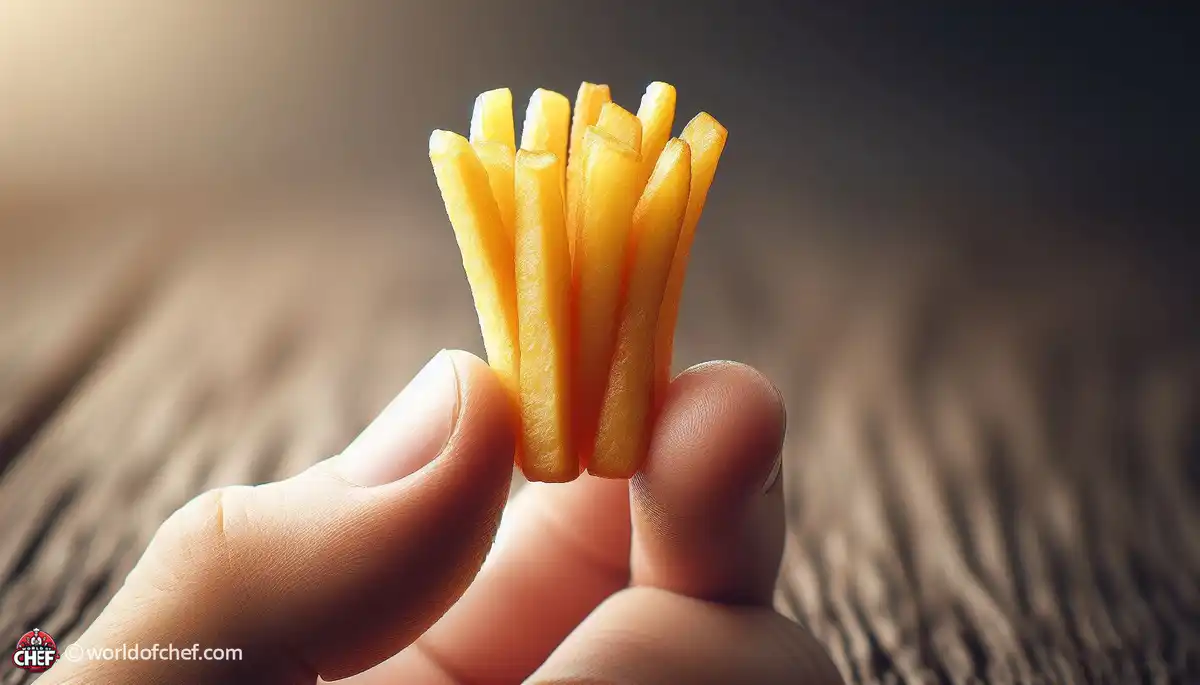
Simmering with Spices: Infusing Flavor into Your Dishes
Emery Donley - Oct 8, 2024 - 8 min read


French fries are history itself in their flavors- crisp and golden, from this earth. Ironically, its origin lies not in France but in Belgium. Winter would see the small rivers froze up, and what could be done to be ready for food during these freezing periods was fry small catches made from the rivers; but once the rivers thawed again, the rivers welcomed their return, with small fishes to be fried within their waters. However, small potato pieces were found within; they sliced and put into oil for frying-thence, French fries became an item.
French fries, which once were just an ordinary fast food, are now a staple in most restaurants and backyards. This fast food from France crossed the Atlantic to reach the American land. French fries have now become numerous kinds, such as shoestring, steak-cut, among many others.
However, even for most of these great cooks, it still seems quite impossible to achieve the perfect French fry. A great fry must be crispy outside and soft on the inside. However, although numerous techniques can deliver crispiness, only one method remains the most loved among both chefs and foodies: double frying.
Essentially, double frying is cooking potatoes twice: once low in temperature to cook the potatoes inside, and then a high temperature to crisp it out. The two steps are meant to make sure the potatoes have an out exterior with a golden color but keep the interior juicy.
Temperature is the secret of success for this double frying process. Thus, in the first fry that may run for 5-7 minutes at approximately 325°F (163°C) for potatoes, it cooks gently where starches will gelatinize and will not brown too much. The final frying process takes 2-3 minutes at a much higher temperature of 375°F (190°C) to crisp up the potato's outer layer into the crunch that you want.
The Maillard reaction is one of the chemical reactions that contribute to making double-fried French fries crisp. This reaction between amino acids and reducing sugars is caused by the potatoes containing them when exposed to hot temperatures. As the fries undergo their second fry, the Maillard reaction becomes more intense; thus, complex flavor compounds are produced, accompanied by a deep, golden crust.
Not all potatoes will yield French fries. Best is Russet, because they contain high starches and very low moisture levels. Avoid waxy potatoes, which hold too much moisture and produce soft fries.
Preparation of the potatoes comes first in double frying. Peel and cut the potatoes into sticks or wedges to be uniform in size, and wash them in cold water to remove excess starch and pat dry using paper towels to fry evenly.
Use the right temperature of oil for frying French fries. This is the only way someone can end up with crunchy French fries. Use a deep fryer or heavy-bottomed pot filled to the top of enough oil to submerge the French fries. Make sure the temperature will monitor closely to adjust heat how you desire it constant to be for frying.
While classic salt and pepper are always a crowd-pleaser, don't be afraid to get creative with your seasoning choices. Sprinkle your fries with garlic powder, paprika, or grated Parmesan cheese for an extra burst of flavor. Experiment with dipping sauces like aioli, ketchup, or chipotle mayo for added depth.
You can also add some smokiness with herbs and spices for more flavor. Smoke your frying oil by heating it with a bit of aromatics in the form of rosemary, thyme, or chili flakes before you put potatoes into it. This yields a very subtle, different flavor for the fries for that extra oomph.
Double frying is a traditional method for preparing crispy French fries. There are other alternatives though - Air Frying, baking, and even grilling-which yield tasty food products with less oil and fewer calories. Try the various methods and see which suits your taste and dietary needs best.
Indeed, double frying surely does yield the crispiest French fries with balanced texture and flavor. Double-frying potatoes twice at different temperatures will give the golden-brown exterior along with a fluffy inside that can satisfy even the most finicky palates.
Although double frying is very efficient, it also has disadvantages. To begin with, it is time-consuming compared to other forms of preparation. Moreover, it also uses more oil, thus not very suitable for the diet of certain people. Its process of frying also puts more risks because high temperature can be very dangerous if humans are careless.
This means that whether you should or should not double fry French fries is a matter of personal preference and culinary objectives. If you are willing to put in the time and energy, double frying can raise your fries to gourmet status, impressing your friends and family. However, if you prefer something quicker and healthier, there are many other methods you can try. Whether it's the long cut, chunky piece, or slice, top it all off with crispy French fries-just don't deny yourself.

Emery Donley - Oct 8, 2024 - 8 min read

Russell Comeaux - Oct 8, 2024 - 8 min read

Walter Backus - Oct 7, 2024 - 8 min read

Samantha Thames - Oct 7, 2024 - 6 min read